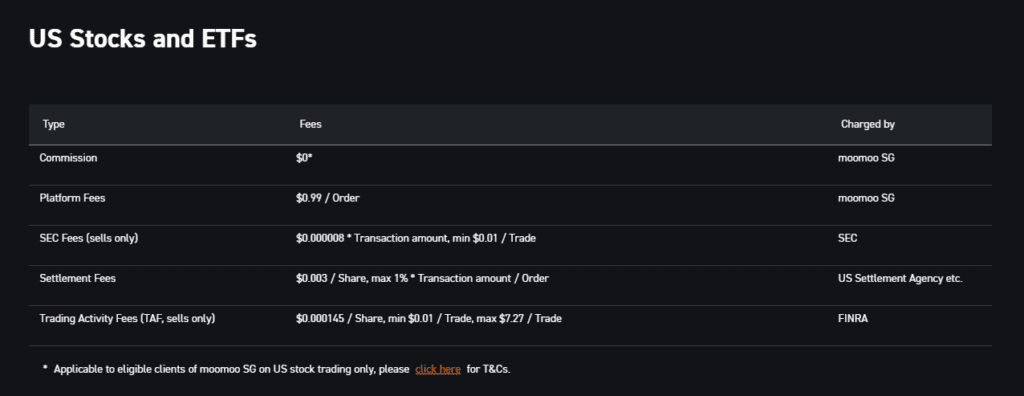
In recent years, the financial industry has witnessed a significant shift in the way brokerage services are offered. The rise of zero commission trades has disrupted the traditional commission-based model, allowing investors to trade stocks and other assets without incurring any direct fees.
Is it possible that zero commission deals are too good to be true? What is the catch? Otherwise, how can such brokerages give their services for free? If not, why did it take so long for brokerages to begin offering zero commission trades, also known as commission-free trading?
I recalled that in the past, we had to pay $20 commission fees to a brokerage in order to execute a trade. Long were such days. With the option of using a digital brokerage that can offer zero commission transactions, young investors no longer face the same barriers and can begin trading with far less funds. Don’t dismiss this since it offers a significant advantage: investors can now gain market experience at a younger age, which will serve them well as they grow older and their portfolio expands. Some of these digital brokerages are Webull, Tiger Brokers and moomoo.

Back to the question, what is the catch exactly? Surely it is too good to be true but what are the truths behind them? In this article, we will delve into the truth behind zero commission trades.
Table of Contents
What are zero commission trades?
Zero commission trades refer to a trading model where brokers charge no direct fees for executing trades on behalf of their clients. Instead of earning revenue from commissions, these brokers often generate income through other means, such as interest on margin loans, order flow arrangements, or premium subscription services. Zero commission trades have gained popularity due to their cost-saving nature and accessibility for retail investors.
The Rise of Zero Commission Trades
The traditional commission-based model for trading stocks involved brokers charging a percentage-based commission on each trade executed. This model often resulted in high fees, particularly for active traders or those dealing with large volumes. The emergence of zero commission brokers challenged this model by offering commission-free trades, democratising access to financial markets and reducing costs for investors.
While zero commission trades offer numerous benefits, it is crucial to consider their drawbacks as well. Although the absence of direct fees is appealing, investors need to be aware of the potential trade-offs associated with these services. Some zero commission brokers may have limitations on available assets or provide a lower level of customer support compared to traditional brokerage firms.
The Truth About Zero Commission Trades
While zero commission trades may sound too good to be true, it is essential to understand how these brokers generate revenue. Despite not charging direct commissions, zero commission brokers still find ways to make money.
How zero commission brokers make money
Zero commission brokers often employ several revenue streams to sustain their business. One common method is payment for order flow (PFOF), where brokers receive compensation from market makers or liquidity providers for directing trade orders to them. This practice has raised concerns about potential conflicts of interest, as brokers may prioritise routing orders to the parties offering the most favourable compensation rather than seeking the best execution for their clients.

Another source of revenue for zero commission brokers is interest earned on margin loans. Margin accounts allow traders to borrow funds from the broker to amplify their buying power. While this can potentially increase profits, it also exposes traders to higher risks. Zero commission brokers earn interest on the funds lent to traders and charge fees for margin borrowing. It’s important for investors to carefully evaluate the costs and risks associated with margin trading before engaging in such activities.

Hidden costs and fees associated with zero commission trades
While zero commission trades eliminate direct fees for executing trades, investors must be aware of potential hidden costs and fees. These can include regulatory fees, exchange fees, clearing fees, and other incidental charges that may arise during the trading process. It is crucial to review the broker’s fee schedule and terms of service to gain a clear understanding of the costs involved.
What Are the Fees That Investors Need to Know?
While zero commission trades may eliminate direct fees for executing trades, it’s important for investors to understand that “there’s no free lunch in the world.” While the absence of commissions is a significant advantage, there are still other charges and fees that investors need to be aware of. Let’s explore some of the fees that investors should know about when engaging in zero commission trading.
Platform Fees
While the trades themselves may be commission-free, some zero commission brokers may charge platform fees. These fees cover the cost of providing and maintaining the trading platform, as well as any additional services or features offered. Platform fees can vary among brokers, so it’s important to review the fee structure and consider the value provided by the platform in relation to the cost.
In the case of moomoo (SG), which charges zero commission on trades. Here’s a more detailed breakdown of their fees as listed on their website.

Settlement Fees
When executing trades, investors may encounter settlement fees. These fees cover the costs associated with clearing and settling trades through the relevant exchanges or clearinghouses. Settlement fees can vary depending on the type of asset being traded and the market in which the trade occurs. It’s important for investors to understand the settlement fee structure and factor it into their overall trading costs.
Trading Activity Fees
In addition to platform fees and settlement fees, investors may also encounter trading activity fees. These fees can include regulatory fees, exchange fees, and other charges that arise from executing trades. Regulatory fees are typically imposed by securities regulatory bodies and help fund their oversight and enforcement activities. Exchange fees are charged by the exchanges on which the trades are executed and cover the costs of operating the exchange. It’s important for investors to review the fee schedules of the exchanges and regulatory bodies to understand the trading activity fees involved.
Other Incidental Charges
Apart from the aforementioned fees, there may be other incidental charges that investors need to consider. These charges can include fees for account maintenance, inactivity, data subscriptions, or foreign exchange conversions. It’s essential to carefully review the broker’s fee schedule and terms of service to gain a clear understanding of any additional charges that may arise during the trading process.
Zero Commission Trading for a Balanced Approach
Zero commission trades have revolutionised the way investors participate in financial markets. While the elimination of direct fees can be enticing, it is crucial to understand the underlying revenue models and potential hidden costs associated with these services.
Read more: Investing for Beginners: A Comprehensive Guide to Investing Your Money



Comments (2)
CDP vs Custodian Account:Which is Best for Your Investments?says:
August 27, 2023 at 1:54 pm[…] Read more: Uncover The Truth Behind Zero Commission Trades […]
Saxo Markets Review 2024: Pros & Cons - Personal Financesays:
February 5, 2024 at 1:00 am[…] Before we dive into the intricacies of Saxo Markets, it’s crucial to acknowledge the ever-evolving nature of the investment landscape. The emergence of low-cost brokers has reshaped investor expectations, ushering in an era where zero-commission trades are not just a buzzword but a tangible reality. To delve deeper into the implications of this shift, you can explore my insights on the truth behind zero-commission trades. […]